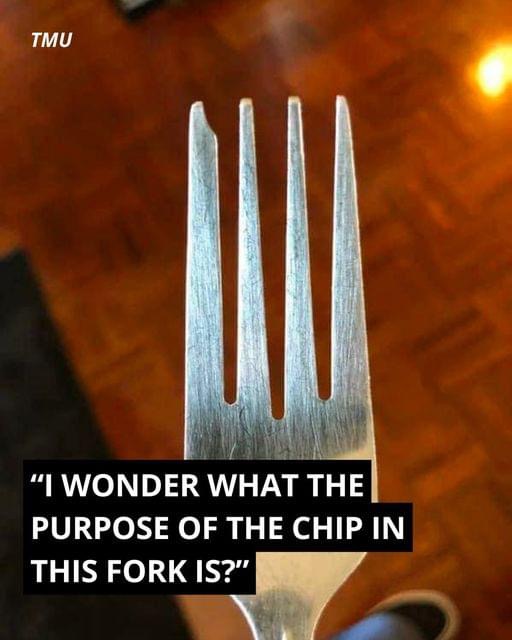
Have you ever wondered why there is that inconspicuous notch on your cake fork? It’s not mere ornamentation or a damaged prong; it serves a practical function! A closer examination of your fork reveals a minute indentation situated on the far-left tine or prong. This seemingly trivial feature holds a utilitarian role that can elevate your cake-eating experience.
The notch serves as a guiding marker, facilitating the correct positioning of the fork and the application of the appropriate pressure to slice through the cake effortlessly. As you press the fork into the cake, the broader tine and the notch collaborate to produce a clean and precise cut. This translates into savoring each cake bite without the mess and inconvenience of additional utensils.
But what about those enigmatic numbers you may have observed etched onto the fork’s metal?
You might encounter tiny numbers near the handle or on the fork’s reverse side. These numbers are neither arbitrary nor ornamental and actually carry a specific significance. Typically, the numbers on your fork denote the quantity of silver utilized for plating the piece.
Forks and other cutlery frequently undergo a process known as silver plating, in which a thin layer of silver is applied to the surface of a base metal. These numbers function as an indicator of the quality and silver content of the plating.
For example, you might find numbers like “EPNS 100” or “925” on your fork. “EPNS” stands for electroplated nickel silver, and the number 100 indicates that 100% of the surface is covered with silver. Similarly, “925” signifies that the fork is made of sterling silver, which consists of 92.5% silver and 7.5% other metals.
These numbers are useful for identifying the silver content and quality of your cutlery
They can provide insight into the value and durability of the piece, as well as help you determine proper care and cleaning methods. So, the next time you pick up a cake fork, take a moment to appreciate the notch on the wider tine. It’s not just a decorative element, but a clever design feature that makes slicing into cake easier and more convenient. And if you happen to spot some numbers on your fork, remember that they reveal valuable information about the silver plating and quality of your utensil.
There are an array of forks used for different foods
Fork tine shapes are tailored for specific foods. Forks with long tapered tines, like dinner forks, are designed for spearing foods like steak. Those with a wide left tine and optional notch, such as salad, fish, dessert, and pastry forks, offer added leverage for cutting foods that don’t need a knife. Curved tines, as seen in oyster forks, match the shape of shells. The American size, also known as place size, is the most popular fork dimension, despite variations in continental lengths.
DINNER FORK
Length: About 7 inches for main courses in all meals.
Continental size: Slightly larger for formal events.
American size: About ½ inch shorter for informal settings.
FISH FORK
Length: 7¼ to 7¾ inches, for fish with an extra wide left tine and optional notch.
LUNCHEON FORK
Length: About 6¾ inches, found more often in older sets of flatware.
FRUIT FORK
Length: About 6¼ inches, used more often in Europe for cut fruit.
SALAD FORK
Length: About 6 inches, with flatter and slightly broader tines for cutting thick lettuce or veggies.
Sometimes grooved or connected by a rod.
Used in formal and informal dining, also for appetizers.
DESSERT FORK
Length: 6 to 7 inches, narrower than a salad fork.
For cutting firm desserts, used in formal and informal dining.
ICE-CREAM FORK
Features a wide shallow bowl with three tines.
Used to scoop and eat soft ice cream.
PASTRY FORK
Length: 5 to 5½ inches, narrower with a notched left tine.
Used in informal dining for cutting pastries.
SEAFOOD FORK
Length: 4½ to 5½ inches, small, three-pronged fork.
Used for spearing seafood in both formal and informal dining.
STRAWBERRY FORK
Made with three long narrow tines.
Used for piercing strawberries and dipping in condiments.
Used in formal dining for eating prepared snails.
OYSTER FORK
A small utensil with three short, wide curved tines.
Used in informal dining for extracting oyster meat.
Now, armed with this knowledge, you can enjoy your next slice of cake with a newfound appreciation for your trusty cake fork’s functional and prac